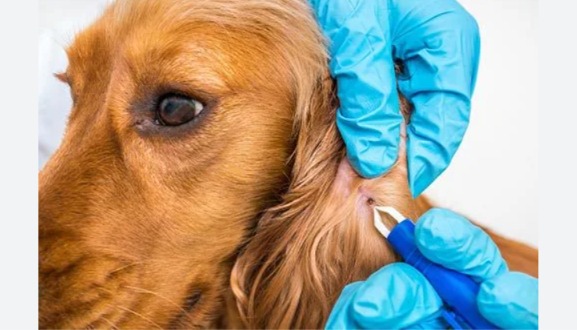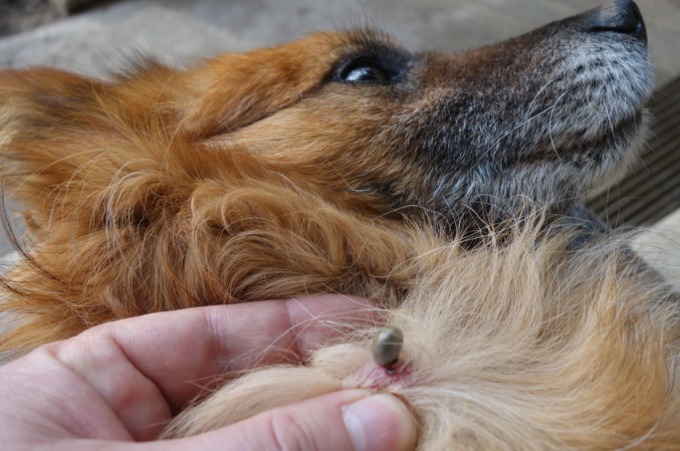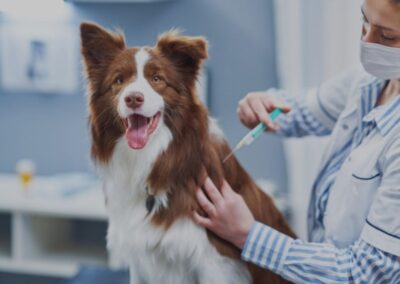
If there’s one nightmare no dog owner wants to face, it’s a flea or tick invasion.
These little vampires don’t just irritate—they can unleash allergies, infections, diseases, even worsen anemia. So this isn’t fluff.
It’s survival. It’s about keeping your dog safe, healthy, and itch-free.
Why Prevention Isn’t Optional
Fleas and ticks aren’t casual guests—they’re parasites that must bite to live.
In the process, they inject saliva, which can trigger allergic reactions, dermatitis, or infections.
Ticks? They carry some of the worst names you’ve heard: Lyme disease, anaplasmosis, babesiosis, Rocky Mountain spotted fever, tapeworms, and more.
Some of those illnesses don’t just hurt dogs—they can threaten humans too.
So yes—prevention isn’t optional. It’s your front line.
When to Start and How Long to Keep It Up
Don’t wait until the first warm day. Start protection when your puppy is about 8 weeks old, or earlier if your vet approves.
And yes—this is a year-round job. Ticks and fleas can sneak indoors, survive in carpets, or hitch a ride in unexpected ways, even in colder seasons.
If your region has warm days in winter—or your dog is indoors mostly—there’s even more reason to keep protection all 12 months.
Choosing the Right Protection
1. What kind?
You’ll see two major approaches:
- Topical (spot-on) products: liquids you apply to the skin, usually along the back or neck. Handy if your dog doesn’t like pills—but you must prevent licking and keep them dry long enough for the product to absorb.
- Oral chewables/tablets: your dog eats it, and the chemicals circulate internally to kill pests. Great for dogs that paddle in water or get frequent baths.
Some products only fight fleas. Others are combos that also tackle ticks, heartworms, and intestinal parasites. Credelio Quattro, for example, is a 6-in-1 formula covering fleas, ticks, heartworm, hookworms, roundworms, and tapeworms.

2. Consider your dog’s traits
- Breed and genetics: Some dogs, like Collies or Australian Shepherds, carry the MDR-1 gene mutation, which makes them more sensitive to certain medications. Always check with your vet.
- Health status: If your dog has past seizures, chronic disease, or other sensitivities, certain medications—especially those in the isoxazoline class—require caution.
- Lifestyle & geography: A dog spending time in wooded areas, parks, or around other animals is at higher risk. Even indoor dogs can be vulnerable via fleas hitching in on gear or clothing.
And always match the product to the dog’s weight, age, and species. Dog products can harm cats. Always read labels.
Popular Medications (and What They Do)
- Advantage / Advantage II / Advantage Multi: topical options targeting fleas and, in the Multi version, other parasites like worms.
- Bravecto (fluralaner): oral or topical, effective for up to 12 weeks.
- Credelio (lotilaner): chewable monthly for fleas + ticks.
- Credelio Quattro: the 6-in-1 combo including internal parasites.
- Comfortis: oral tablet for fleas only. Works fast but doesn’t address ticks.
Each has pros and cons. No one size fits all.
What to Do If You Spot a Flea or Tick
If you find a single flea or one tick, don’t brush it off. That’s your red flag. You may already be dealing with eggs or a growing infestation.
Ticks should be removed carefully: use fine-tipped tweezers or a tick key, grasp the tick as close to the skin as possible, and pull straight out without squeezing the body.
Don’t smother it with petroleum jelly or heat. Those tricks can backfire.
For fleas, baths with dog-safe shampoos, flea combs, and vacuuming your home can help reduce the numbers.
But ultimately, you’ll need a reliable preventive strategy.

Why “Natural” Isn’t Always Safe
You might read suggestions to use essential oils, garlic, citrus, herbal mixes etc.
Don’t be fooled. Many essential oils are toxic to dogs—particularly when applied on skin, ingested, or inhaled.
Even small amounts of citrus oils, peppermint, tea tree oil, pine oil, etc., have been linked to seizures, organ damage, skin irritation, and worse. Stay within vet-approved strategies.
Tips to Maximize Protection
- Administer your preventive on schedule. Missing or delaying a dose opens the door for pests.
- Avoid bathing your dog right before or after applying a topical treatment; water can reduce efficacy.
- Treat the environment: vacuum regularly, wash bedding, mow grass, and spray area treatments if fleas invade the home.
- Use only vet-approved products. Never mix or double up unless instructed.
- Monitor your dog for any adverse reaction—itching, vomiting, etc.—and call your vet immediately if anything seems off.
Fleas and ticks are sneaky. They’re opportunists. But you don’t have to let them win.
With consistent, well-chosen prevention and smart action if problems arise, you can keep your dog comfortable, disease-free, and happy.
Because your dog doesn’t deserve scratchy misery.
They deserve freedom—walking, playing, and living without pests dragging them down.
Stay sharp, stay consistent, and when in doubt: check with your vet.



